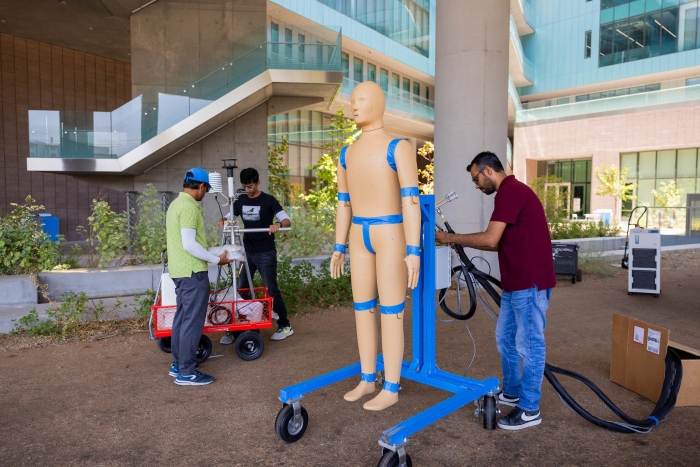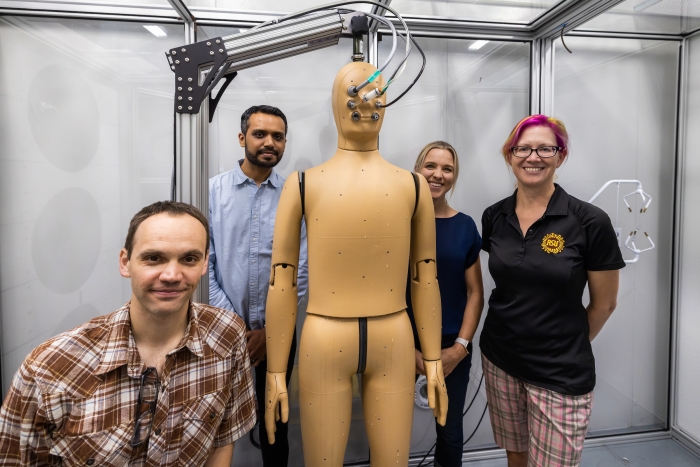ASU scientists use new technologies to monitor, mitigate heat exposure risk
Studies pave the way for further extreme heat risk mitigation actions, future studies
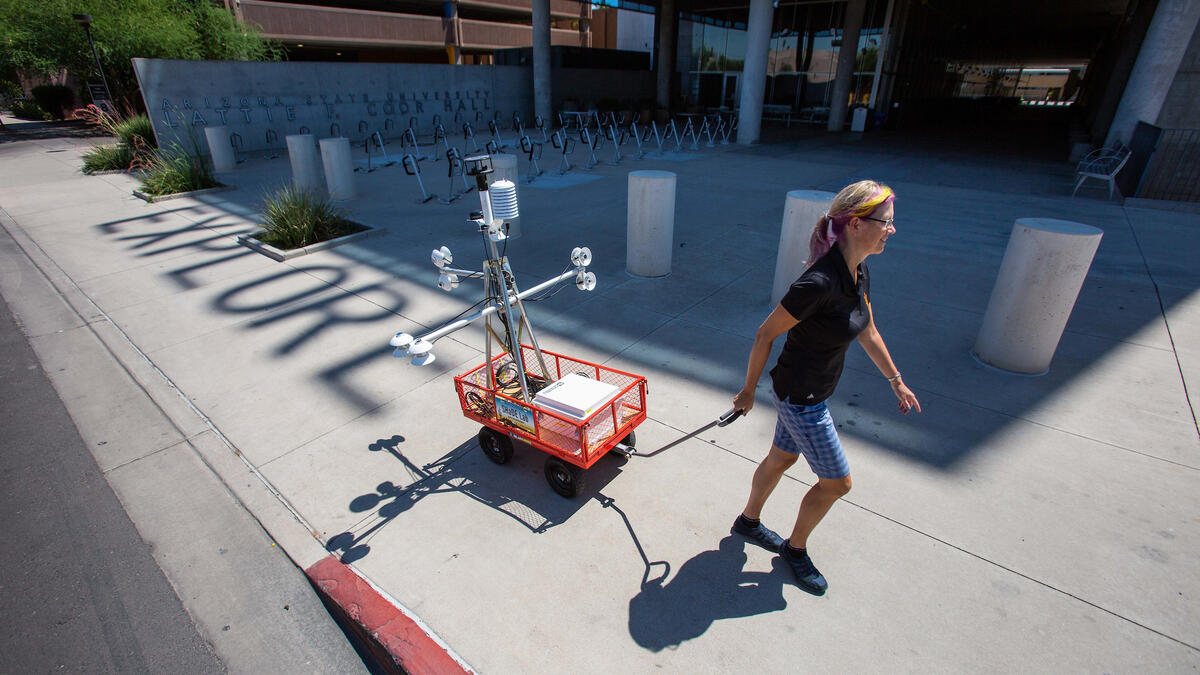
ASU Associate Professor Ariane Middel pulls MaRTy, which she uses to conduct shade research, along a sidewalk on the Tempe campus. Photo by Deanna Dent/ASU
With central Arizona temperatures hitting triple digits again, heat research experts are working to better understand the effects of extreme heat on cities and their populations.
"Extreme heat poses a pressing global health concern, with urban areas particularly at risk due to the heat-island effect and the more recent hotter summers due to climate change," said Konrad Rykaczewski, associate professor of mechanical engineering in the Ira A. Fulton Schools of Engineering at Arizona State University.
An ASU team, led by Rykaczewski, along with colleagues Jennifer Vanos and Ariane Middel, are currently working on a four-year, $2 million National Science Foundation project to better quantify the impact of heat on the human body.
Now, in some of their first results, they have pioneered better measurements of the heat’s effect on the human body with a customized outdoor thermal manikin, called ANDI, coupled with a state-of-the-art mobile biometeorological station developed by Middel’s team, called MaRTy.
Read more about MaRTy and ANDI
• Do trees provide the best shade for urban environments?
• Meet the world's first outdoor sweating, breathing and walking manikin
• Follow @ASUMaRTy and @ASUThermalANDI on X
The team used insights from this complex, one-of-a-kind instrumental suite to develop cost-effective, simple ways to measure heat radiation at outdoor locations with low-cost sensors (cylinders) to provide critical microclimate data in at-risk areas.
The studies, published in the journals International Journal of Biometeorology and Science of the Total Environment, showcase innovative approaches to understanding and combating the growing challenges of extreme heat.
Together, these groundbreaking tools offer ways to capture heat fluxes on the human body more accurately during high-temperature events, significantly affecting human comfort and health.
Their results add to prior computational work published in International Journal of Biometeorology, where the researchers showed that the cylindrical sensor shape can provide accurate prediction of radiation fluxes experienced by all body types within the adult population in the United States.
Innovative approaches to heat measurement
The summer heat in central Arizona is often compared to turning on an oven. Just like an oven, heat can be measured by factors such as air temperature, humidity, thermal radiation and heat circulation or convection.
“Widely available weather forecasts and real-time reports do not provide information on local microclimates that can change across small distances within a city,” said Ariane Middel, an ASU associate professor in the School of Arts, Media and Engineering and the School for Computing and Augmented Intelligence.
"Also, air temperature or simple heat indices, such as the heat index or humidex, do not quantify the heat load on the human body. In particular, turbulent wind flow and solar radiation hitting a sun-exposed person significantly impact heat stress but are not accounted for,” she said.
Middel adds that outdoor heat exposure has never been measured with realistic human body shapes in extremely hot outdoor conditions. This data gap leads to unvalidated assumptions underlying radiation sensors and disagreement in often-used theoretical convection models.
Thermal manikin mimics human exposure
A state-of-the-art thermal manikin, called ANDI, was equipped with sensors across 35 body zones, and deployed in various urban outdoor settings. This was the very first time a thermal manikin has been used in outdoor settings.
“We leveraged a one-of-a-kind thermal manikin alongside high-end wind sensors and the MaRTy cart to verify our measurements,” lead researcher Rykaczewski said.
MaRTy is a sophisticated mobile technology that can make “gold standard” measurements to verify the air temperature, humidity, wind speed and six-directional shortwave and longwave radiation that ANDI would experience.
Like legacy manikins, ANDI’s shell contains temperature sensors and can be resistively heated. But in addition, ANDI’s shell has heat flux sensors that can be water-cooled with built-in liquid channels thereby enabling convective and direct radiative flux measurements in hot conditions unattainable with prior instrumentation.”
The manikin, MaRTy and anemometers were used during the 2023 summer heat wave in the Valley and deployed for over 20 days in Tempe, under extremely hot conditions (air temperatures up to 47 C, or 117 F, and high sunlight).
They measured radiation and convection heat exchange at ANDI’s skin surface at three different locations chosen to provide unobstructed solar radiation as well as two types of shade (industrial, under a building and natural shade, provided by native Palo Verde trees).
“Usually, thermal manikins are operated in pristine climatic chambers while their support systems are in adjacent labs,” Rykaczewski said. “In contrast, the entire ANDI system — including power and control electronics and water chiller (totaling over 1,000 pounds) — is mobile and ruggedized to operate in extreme heat and dust.”
What did they find? First, their approach showed human bodies can be modeled as cylinders for more accurate heat exposure assessments, even in highly turbulent conditions and under intense solar radiation.
“Using ANDI convection measurements and new geometry-rooted analysis, we demonstrated that different body parts are well-approximated by cylinders, even in turbulent flow that is difficult to generate in a wind tunnel,” Rykaczewski said.
“We were also able to determine that a cylinder with about a 7-inch diameter would be equivalent to a whole human body. With this equivalent diameter, we showed that we can use classical engineering correlations to accurately calculate the heating or cooling of the whole body by complex air flows, indoor and outdoor. This generally applicable approach resolves about 70 years’ worth of highly conflicting convection correlation in the literature.”
The research also showed that regardless of ANDI’s body orientation, MaRTy and ANDI radiation measurements agreed, even under high solar conditions. This agreement validated the main assumption underlying the data, that from radiation perspective, a human body can be treated as a cylinder.
Paving a path for affordable sensors
While radiation accounts for much of the human heat exposure, it is rarely used as a heat metric due to the lack of cost-effective and accurate sensors.
Knowing how specific towns, streets and housing communities are affected by heat can better help first responders mitigate threats to human health.
Based on the new insights from the ANDI radiation measurements, the ASU scientists could develop a simple device that can serve as a portable, street-level heat weather station.
Rykaczewski and his team wanted to demonstrate a simple and easy-to-fabricate three-cylinder shortwave and longwave radiometer that also measures the cylinders’ convection. Using off-the-shelf, cost-effective and readily available materials, they fabricated two combinations of three cylinders with varying surface properties.
This homemade heat weather station melds the concepts of a traditional globe-shaped radiometer with a cylindrical representation of the human body, offering a more realistic assessment of heat exposure than classical methods.
These cylinder-shaped devices were spray-painted black, white or left in a natural aluminum finish. To first test the device, the team went to the rooftop of their research home — the Walton Center for Planetary Health — to perform sunrise-to-sunset measurements. The measurements were paired with MaRTy, again serving as the gold reference standard.
From the rooftop tests, the research team found that their homemade devices could closely replicate the results from MaRTy and be a reasonable approximation.
Next, they extensively tested the devices at 14 outdoor sites, chosen to mimic pedestrian walking areas throughout the Phoenix metro area.
These were taken during the July 2023 record-setting heat wave in Tempe, where temperatures exceeded 110 degrees Fahrenheit for 30 straight days. Temperatures were measured from noon to 2:30 p.m., and stable in temperature from 109 to 113 degrees Fahrenheit (43 to 45 degrees Celsius).
The sites were chosen for their differences in exposure, which varied from fully sun-exposed areas over distinct surfaces (such as asphalt, concrete and grass) to partially exposed urban canyons and courtyards, and spaces covered by a variety of natural (native and non-native trees) and industrial shade (fabric sun sail, perforated metal sheet and movable solar panels).
“We demonstrated that shortwave and longwave radiation measured with the three cylinders closely match MaRTy’s,” Middel said. “This novel method is a promising, cost-effective and easy-to-fabricate approach to assess human heat exposure, including radiation and wind, without $25,000 equipment (the cost of MaRTy).”
Now, the ASU researchers are refining their radiation measurement approach and extending to measuring convection to deploy again for the summer of 2024.
“The novel setup could be used in affordable weather stations and deployed across urban landscapes to build human-relevant heat sensing networks,” Middel said.
Future directions
The insights gained from these studies can further empower city planners, policymakers and emergency response teams with the data needed to enhance heat action plans and effectively reduce heat-related health risks.
"By leveraging hyperlocal biometeorological data, we can significantly improve emergency responses and heat mitigation strategies," said Jennifer Vanos, a co-researcher in the study and associate professor in the School of Sustainability at ASU.
These tools' affordability and ease of deployment make them ideal for widespread use. They promise to transform how cities understand and respond to the challenges of extreme heat.
Looking ahead, the research teams at ASU plan to expand their studies to include dynamic, real-world scenarios, such as the impact of clothing and different postures on heat exposure.
“Thus far, we only conducted measurements with the manikin in a static standing position, emphasizing front wind exposure,” Rykaczewski said. “Both the radiative and the convective heat exposure can be impacted by changes in posture (e.g., sitting vs. standing), the subject’s motion and the presence of clothing.”
Next, the ASU team wants to build on the recently introduced suite of instruments to measure the dynamics of physiological responses — like core and skin temperatures or sweat rate — to specific combinations of hot microclimates (quantified using MaRTy and anemometers) with human factors such as metabolic rates (adjusted for with ANDI) and clothing.
More Environment and sustainability
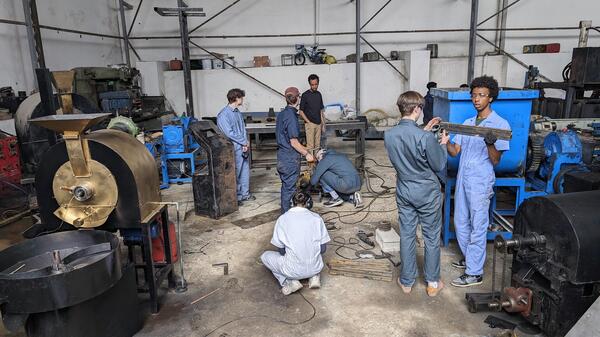
Student engineers travel to Ethiopia this summer to help protect local wildlife
The jagged peaks in Ethiopia’s Simien Mountains National Park are home to the rare gelada monkey. It is the only place in the entire world where the endangered animals — nicknamed the “bleeding-heart…

Global Futures Laboratory at ASU joins DOE initiative to empower women in clean energy
The U.S. Department of Energy-led Clean Energy Education and Empowerment Initiative has announced that Arizona State University now joins the initiative as a partnering university. The Julie…
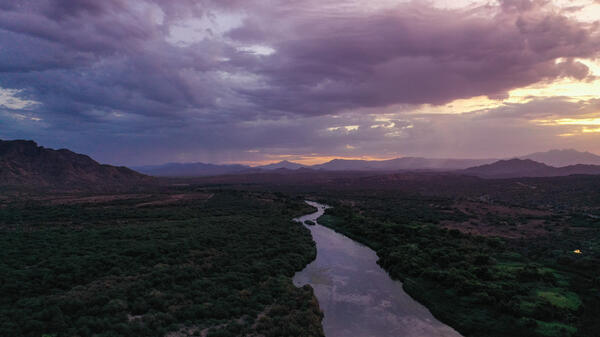
Computer modeling shows where Arizona's winter precipitation originates
The Sun Corridor in Arizona in the semi-arid Southwestern U.S. is a land of seemingly unlimited growth that is constantly colliding with physical constraints. It is mountainous but also home to a…
